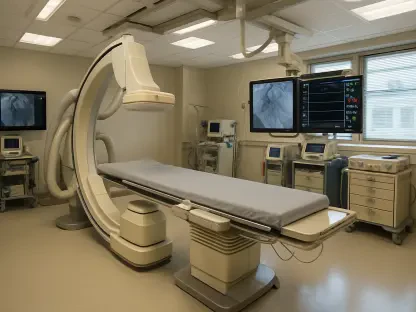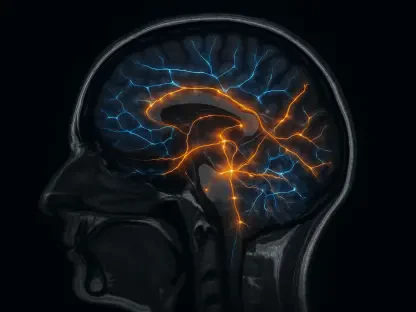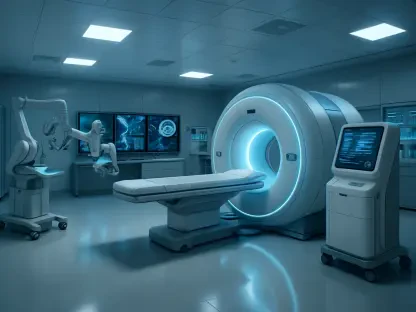The U.S. Department of Health and Human Services (HHS) unveiled a massive restructuring plan early one morning, announcing the elimination of 10,000 full-time employees, reducing its number of divisions from 28 to 15, and halving the number of regional offices. This extensive overhaul is intended to align the department more closely with Health Secretary Robert F. Kennedy Jr.’s priorities, such as addressing chronic diseases. The sweeping changes mark a significant shift within one of the nation’s key health agencies, raising concerns about the long-term impact on essential services and public health.
Scope of the Restructuring
The scale of HHS’s restructuring will affect numerous departments and thousands of employees. The plan targets administrative functions like human resources, information technology, and procurement. Kennedy has described these areas as suffering from “bureaucratic sprawl,” making them primary targets for cuts. As a result, prominent agencies within HHS will see substantial reductions in staffing. At the Food and Drug Administration (FDA), 3,500 employees—about 20% of the workforce—will be laid off. The Centers for Disease Control and Prevention (CDC) will face more than 2,000 layoffs, while the National Institutes of Health (NIH) will lose 1,200 positions.
These staffing reductions come at a particularly challenging time for the NIH, which is already undergoing significant changes in its approach to funding and reviewing scientific research. Despite reassurances from HHS that core functions such as drug reviews at the FDA and Medicare administration at the Centers for Medicare and Medicaid Services (CMS) will remain unaffected, there is widespread skepticism both within and outside the department. Concerns are especially pronounced in light of other recent policy shifts aimed at streamlining administrative functions.
Departmental Impact and Concerns
Concerns about the impact of the restructuring on essential services within HHS are growing, with many questioning the feasibility of maintaining core functions with such deep cuts. Doreen Greenwald, president of the National Treasury Employees Union, called the notion that such deep cuts could be executed without harming agency functions “preposterous.” There is strong skepticism that the plans will not disrupt vital services, such as drug reviews at the FDA and the administration of Medicare at CMS.
Former FDA commissioner Robert Califf also expressed apprehension over the cuts, noting that the FDA’s work requires a highly interactive approach across various areas of expertise. He argued that reducing administrative staff could slow product development and assessment. Even Robert F. Kennedy Jr. acknowledged that the restructuring would lead to a “painful period” for the agency. Despite his contention that HHS bureaucracy had historically harmed Americans’ health, he conceded the significant challenges posed by the impending layoffs.
Response from Department Employees
The announcement left many HHS employees blindsided. Department leaders were reportedly unaware of the specifics until the news broke, leading to widespread frustration and confusion within the agency. A long-time HHS lawyer revealed that the restructuring caught “a lot of management off guard,” reflecting the ongoing anxieties that have been brewing since the Trump administration began. Concerns about potential layoffs had been simmering, but concrete details only emerged with the recent announcement.
Employees from various divisions echoed similar frustrations. An FDA staff member from the Center for Devices and Radiological Health described their director’s struggle to acquire precise details from other division heads. Likewise, employees from the Administration for Children and Families noted that they received no further information beyond what was stated in the press release. This lack of clarity has caused significant distress among employees, many of whom fear a sudden and unmanageable change to their professional lives.
Criticism from Lawmakers and Leaders
The restructuring has drawn sharp criticism from Democratic lawmakers and former HHS leaders. Many argue that the significant staff cuts will compromise the agency’s core mission. Xavier Becerra, who served as HHS Secretary under President Joe Biden, referred to the changes as a “manmade disaster.” He questioned how reducing services for vulnerable populations, such as the elderly and disabled, and scaling back strategic preparedness and response capabilities, could possibly benefit the health and well-being of American citizens.
Lawmakers have also raised concerns about the potential long-term impact of the restructuring on public health initiatives and emergency preparedness. With the agency’s reduced capacity, there are fears that HHS may struggle to respond effectively to future health crises. Critics argue that the agency’s ability to maintain its fundamental functions, such as disease control, public health response, and regulatory oversight, could be deeply compromised by the cuts.
Perspectives on the Restructuring
Despite widespread criticism, some perspectives on the restructuring process are more optimistic. Scott Whitaker, head of the medical device lobby Advamed, highlighted that FDA experts focused on improving patient access to innovative medical technology would not be affected by the cuts. He considered this a positive sign for the continued advancement of medical technologies. Whitaker’s view suggests that the focus on maintaining certain critical functions might mitigate some of the negative impacts of the restructuring.
Sara Brenner, the acting FDA commissioner and principal deputy commissioner, echoed this sentiment in an internal email. While acknowledging the challenges the changes might pose for some employees, she asserted that the restructuring could position the FDA strongly for its future mission. Brenner expressed confidence that the agency’s ability to fulfill its regulatory responsibilities would be enhanced by the overhaul, fostering long-term improvements in public health outcomes.
Atmosphere of Fear and Uncertainty
The U.S. Department of Health and Human Services (HHS) announced a substantial restructuring plan early one morning, disclosing the termination of 10,000 full-time employees, the consolidation of its divisions from 28 to 15, and a 50% reduction in the number of regional offices. This major reorganization aims to better align the department with the priorities of Health Secretary Robert F. Kennedy Jr., including a stronger focus on tackling chronic diseases. The extensive changes signal a momentous shift within one of the nation’s primary health agencies, sparking concerns about the potential long-term effects on essential services and public health. While intended to improve efficiency and responsiveness, the overhaul raises questions regarding its impact on the department’s ability to serve the public effectively. As the reductions take effect, the challenge will be to maintain the quality and accessibility of healthcare services amidst the significant downsizing and reorganization of the department’s structure and workforce.









